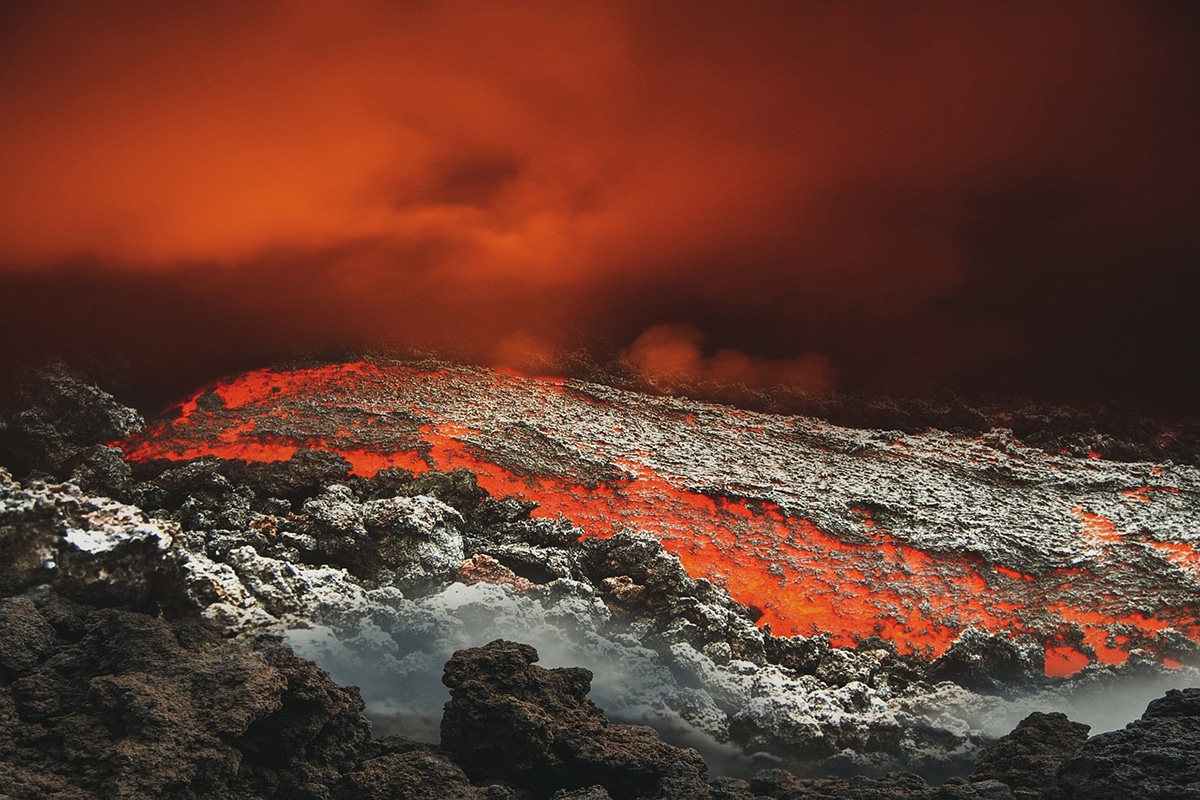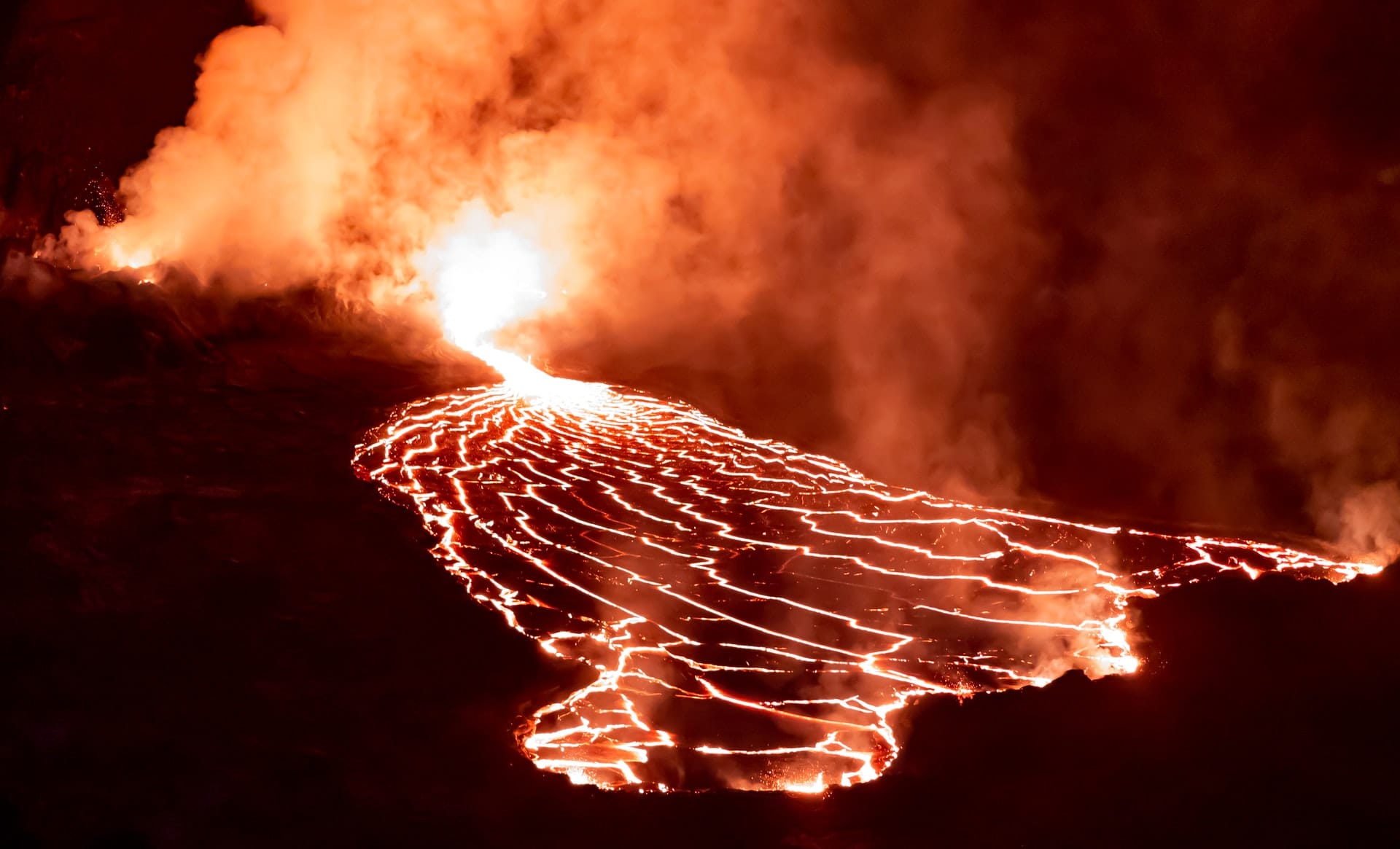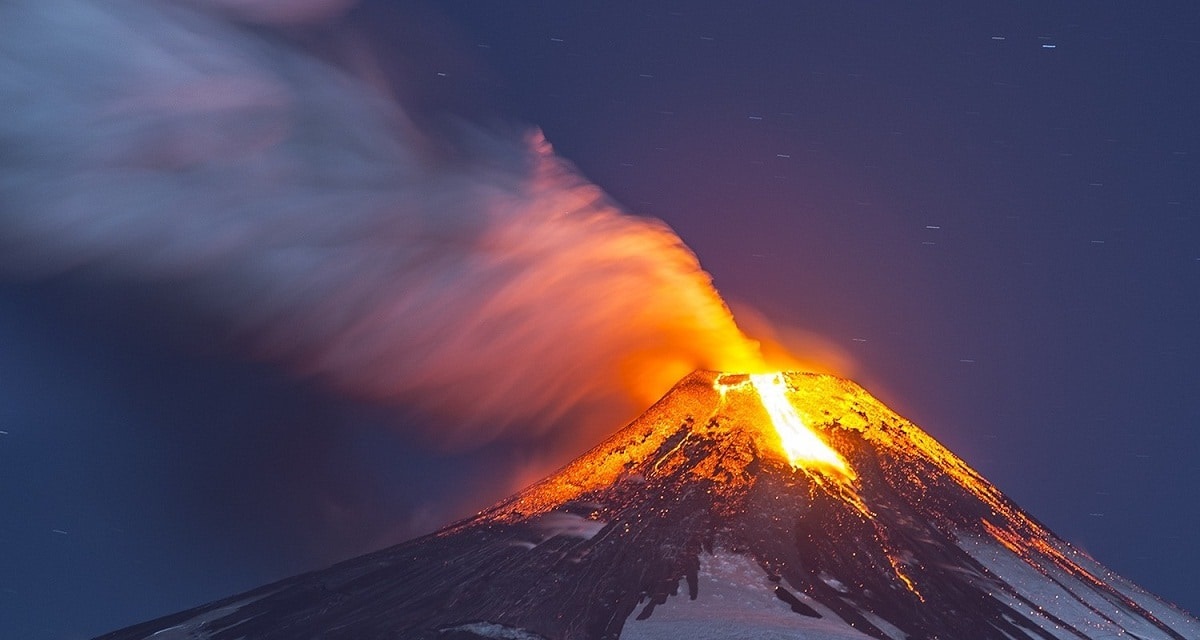
We all know what a volcano is and the catastrophic consequences that its eruption can have. There are many movies that deal with this subject and in recent years there have been a few that have destroyed thousands of homes. The lava consumes everything in its path, destroying entire habitats. We always associate it with a thick red liquid that burns everything. But did you know that there are different types of lava?
So thats it. The lava varies according to its origin and the surface it leaves after cooling, a feature by which it is quite easy to determine which variety it is. If you are curious about this topic, I recommend that you continue reading. We will explain what lava and its flows are and what are the different types that exist.
What kind of liquid is lava?

Before talking about the different types of lava, we will first explain what this liquid is to better understand it. It is the mass, or magma, of the molten rock that is generated inside the Earth and reaches the Earth's surface by rising through a volcano. Very roughly two types of lava can be distinguished:
- Lava from basic magma: It is the most abundant and contains silicates with high iron and magnesium content.
- Lava from acid magma: On the other hand, the silicates of this type of lava are rich in potassium and sodium.
When classifying the different types of lava, it is normally done according to the flow. What is this? As well, They are the mantle of lava that flows over the earth's surface after a volcanic eruption. When this happens, lava tubes or channels are generated, since the loss of heat with respect to the ground and the contact with the atmosphere cause these flows to end up solidifying. With this knowledge it is possible to create simulations by means of which it is possible to predict the route that lava flows will take today. In this way, it is possible to anticipate which regions will be affected and take measures in time.
Lava flows: Characteristics
As can be expected, the characteristics of lava flows are directly related to the particularities of the liquid itself. However, we can list three features that affect the speed of lava flows:
- The fluidity of lava
- Viscosity
- Properties related to the percentage of silica

Depending on the type of lava, the respective flows change. If it is a more fluid lava, the flows that originate from it tend to be not very thick and very extensive. On the other hand, the more viscous lavas give rise to thicker and less extensive lava flows. However, the speed does not depend solely on these factors that we have just mentioned, but also from the expulsion force of the volcano and the topography.
In general, the descent of the lava flows tends to pass linearly along the slope of the volcanic cone. It usually happens that the eruptions do not take place just in the main crater of the volcano, but in the various fissures of the cone. Consequently mantles or lava fields appear. It should be noted that several lava flows can be produced during a volcanic eruption, there doesn't have to be just one.
What are the different types of lava?

As we mentioned earlier, The types of lava are differentiated by flows and depend mainly on the form they take. Let's see what they are below.
pahoehoe lava flows
The term "pahoehoe" is originally from Hawaiian and translates as "soft." This type of lava is also known as corded lava and is quite basic. From it comes the colada cordada or the colada pahoehoe. In this case, the surface usually has a folded, wavy or smooth appearance, very similar to the shape of a rope, which gives it its name. This feature that distinguishes this type of lava flow is generated thanks to the agile movement of this liquid under the crust.
lava flows aa
Again the name of this type comes from the Hawaiian and translates as "burn" or as "stony with rough lava." In this case, the lava is basaltic and gives way to what we know as aa flow. This guy, when he cools down, obtains a fragmented, loose and rough surface. This characteristic is due to the fact that the superficial lava cools partially and that its pressure causes it to lose gases very quickly. Consequently it fragments and deforms.

Usually, aa lava flows advance quite slowly. Its speed has been calculated to be between five and fifty meters per hour. What this type of lava has in common with pahoehoe lava is that it also comes from basic magmas with a certain fluidity. It should be noted that the castings of both tend to form networks of channels and tubes.
Block lava flows
Another type of lava is block lava. It is mainly characterized by originating from intermediate-acid magmas. As for its castings, block castings, create a fragmented surface into several large irregular blocks when cooling down. Their edges are usually angular.
Padded lava flows
Finally we have to highlight the pillow lava. This comes from basic maga, although on some occasions it has originated from intermediate-acid magma. This type of lava solidifies when it comes into contact with water, giving rise to its corresponding colada that has the shape of stacked and rounded pads (hence its name). The pillow lava flow can be generated by the eruption of an underwater volcano or by the lava flow belonging to a terrestrial volcano that reaches some aquatic environment, such as a river, a lake or the sea.
Now you know the different types of lava and their flows. I hope this information has been interesting for you.